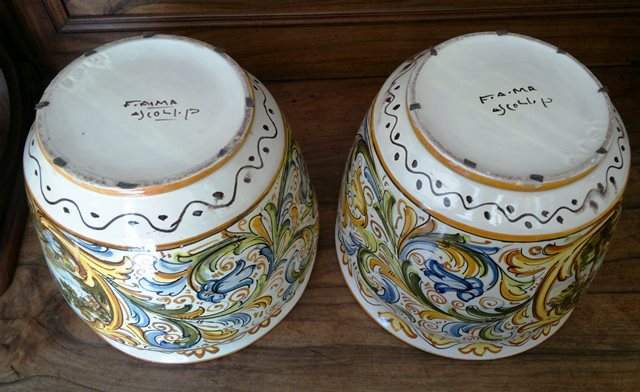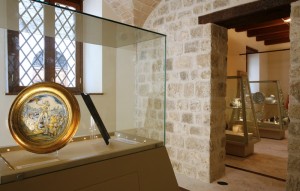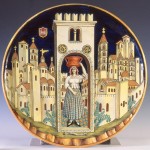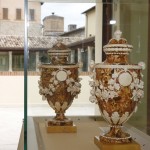The Museum of Ceramic Art was inaugurated in 2007; it is dedicated to Ascolan majolica since XV century. The museum is located in S. Tommaso Square, seat of the ancient amphitheater during the Roman period. Today, in this place, you can admire the beautiful Romanesque church of S. Tommaso.
In the first section of the museum the most ancient examples of Ascolan ceramic art are exhibited: among them we can find small plates which we can find on the facades of the Ascolan churches still today, as a decoration. On these plates you can see the use of geen color (copper oxide) called “ramina”. Still today some potters use this technique..
At the end of the XVI century the Ascolan majolica was insufficient: in this period Ascoli Piceno imported ceramic from Castelli, in Abruzzo Region. The ceramics from Castelli are an interesting section in the museum today.
In the cloister of the museum you can find some cases which show ceramics from the private Antonio Ceci’s collection: among them you can admire Ligurian ceramics, porcelains (Ginori manufacture), “Arlecchino” plates from Montelupo, ceramics from Faenza and Deruta.
On the superior floor the Ascolan ceramics made by Giovanni Paci are exhibited; Giovanni Paci was one of the member of Paci’s family, a family of great Ascolan artists during the XIX century. Paci artists used to use a decorative element on their ceramics: “the Paci’s rose”. Among the objects you can find strange objects such as the “scaldino”.
The last section is dedicated to Matricardi manufacture ; it was activated during the twenty years of the XXI century in Ascoli Piceno; you can admire the beautiful ceramics made by Giancarlo Polidori in Liberty style, tea set decorated by Adolfo De Carolis: it was inspired by trawler in San Benedetto of Tronto. The exhibition is concluded with the FAMA and SPADA’s manufactures.
- Plate made of ceramic, Polidori
- Neoclassical vases, Paci manufacture.





